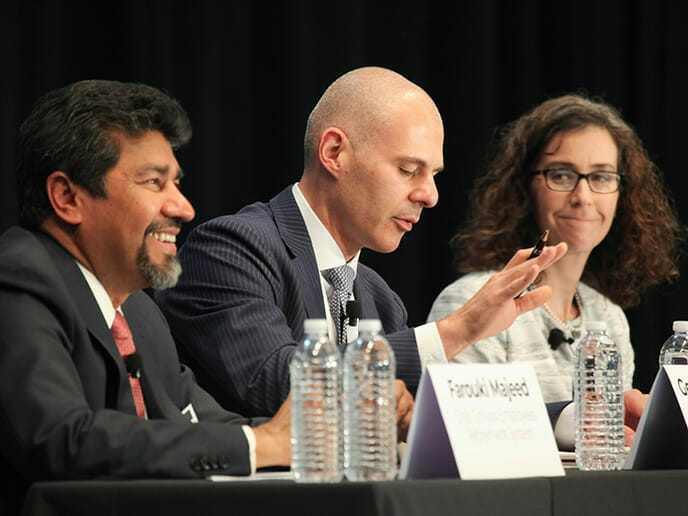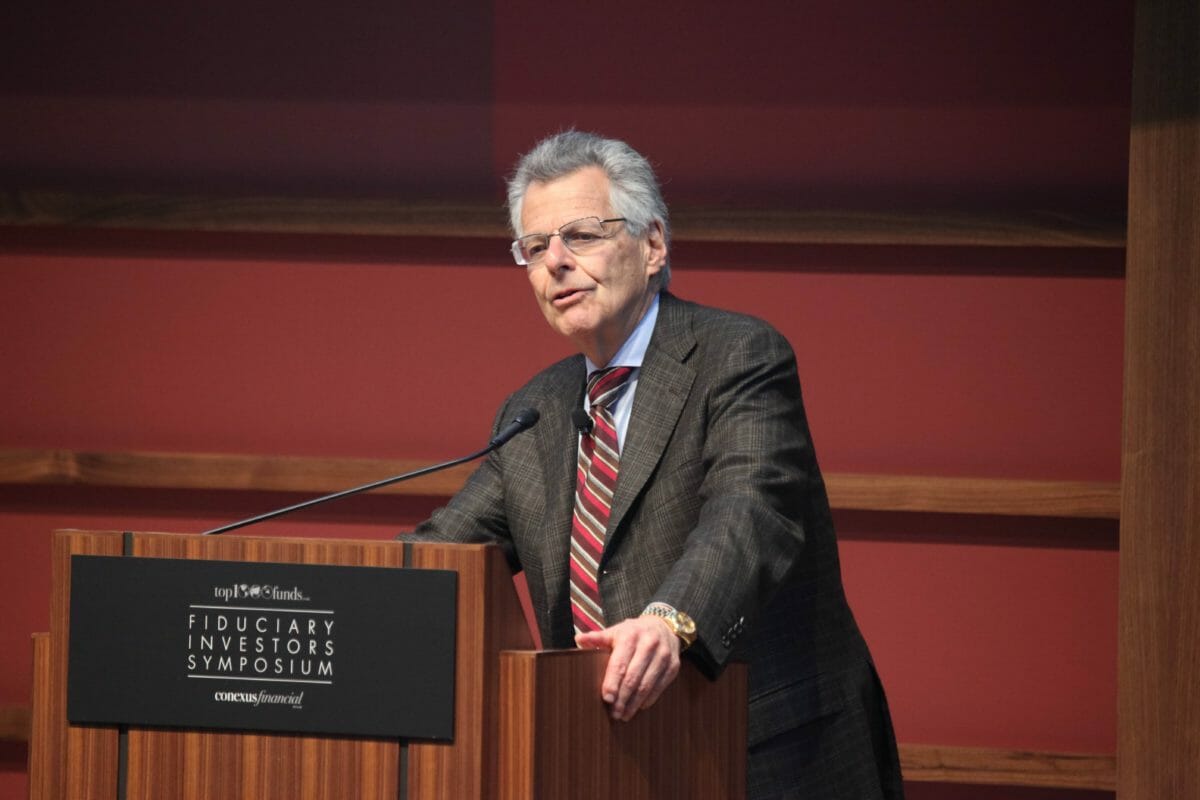Active and passive investment strategies aren’t adversaries, they are both part of the same ecosystem, said a panel of experts at the Fiduciary Investors Symposium at Stanford University.
Alison Romano, senior investment officer in global equity at the $160 billion Florida State Board of Administration, told delegates the pension fund’s risk targets shape its allocation to active and passive strategies. She said active management “does and continues to work” in the global equity allocation and expects active allocations to outperform passive as markets grow more challenging.
Gene Podkaminer, senior vice-president, head of multi-asset research strategies at Franklin Templeton Multi Asset Solutions, said it was important to think about passive and active strategies not only as a trade-off between risk and return, but more as a way of shaping implementation. For example, passive strategies can help with pension funds’ liquidity calls, he said.
Farouki Majeed, chief investment officer of Ohio School Employees Retirement System, invests according to a risk and cost budget. He told delegates he chooses active and passive strategies in the various asset classes according to which ones are most likely to provide excess returns relative to the policy benchmarks. He notes less success in equity, and therefore spends less of his risk budget in equities and more in private equity and real estate, opportunistic investments and some hedge funds. However, although the fund doesn’t spend much of its risk budget on equity, most of its total risk budget is in equities. The total risk is decided by the board, Majeed explained. They set OSERS’ 60 per cent allocation to equity to meet the fund’s long-term return target of 7.5 pe cent, he said.
Majeed said it was relatively easy to acquire beta returns across the board at low cost but he noted that hedge fund returns are challenged. This led the panel to discuss the rise of factor strategies, which sit between active and passive. The panel noted that factor investment did involve a series of active decision0making. For example, around construction and acknowledging that one value factor can behave differently to another, avoiding duplication as well as decisions around rebalancing. Putting these pieces together to get the return stream you want is an active decision, Romano said.
Indeed, using smart beta or factors allowed investors to “own decisions” with significant governance implications, Podkaminer said., the panel discussed using factor benchmarks, rather than looking at active or passive solutions against a market cap-weighted benchmark, to more easily see how much beta and alpha they are receiving. For example, as volatility is likely to increase, investors could change their global equity benchmark from cap-weighted to a volatility-adjusted benchmark.
Florida State Board of Administration has worked with consultants to weigh up the value of active management in the portfolio, leading to a revamp of its active managers, Romano said. She said she wanted to spend most of her risk budget in emerging markets and micro-cap strategies, parts of the market that attract active management and lack efficiency. The panel discussed the challenge of passive strategies in fixed income, where it can lead to exposure to the most indebted companies, since they often have the highest allocations in the index. Here, active strategies allow investors to play with the duration, sector and individual security and the cost is lower than in other active strategies.
The panel mulled whether exposure to high conviction strategies was a way to complement passive. However, investors noted that they are constrained in their ability to pursue active strategies because of the risk of underperformance and an inconsistent performance. If global equities underperform, investors struggle to make up for the losses in other allocations. High allocations to equity, and the high underlying risk, cause any errors to hurt the rest of the performance.
The panel stated that passive managers take as proactive a role engaging with companies as active managers, allaying concerns that passive managers, with meaningful and large allocations, were not active ESG owners. Romano said Florida had an entire corporate governance group dedicated to engagement and the fund “didn’t treat passive holdings any differently”. Indeed, because passive investment results in bigger holdings in some corporate names, there is more potential influence to wield.
The panel noted that just because investors “happened to choose a bunch of stocks determined by an index”, there was no reason to think engagement would be slack. Moreover, it is a myth that active managers are always engaging with companies, Romano suggested.
“There is no evidence they do more than others,” she said, noting that passive managers such as BlackRock are active in corporate governance and, more broadly, ESG.




